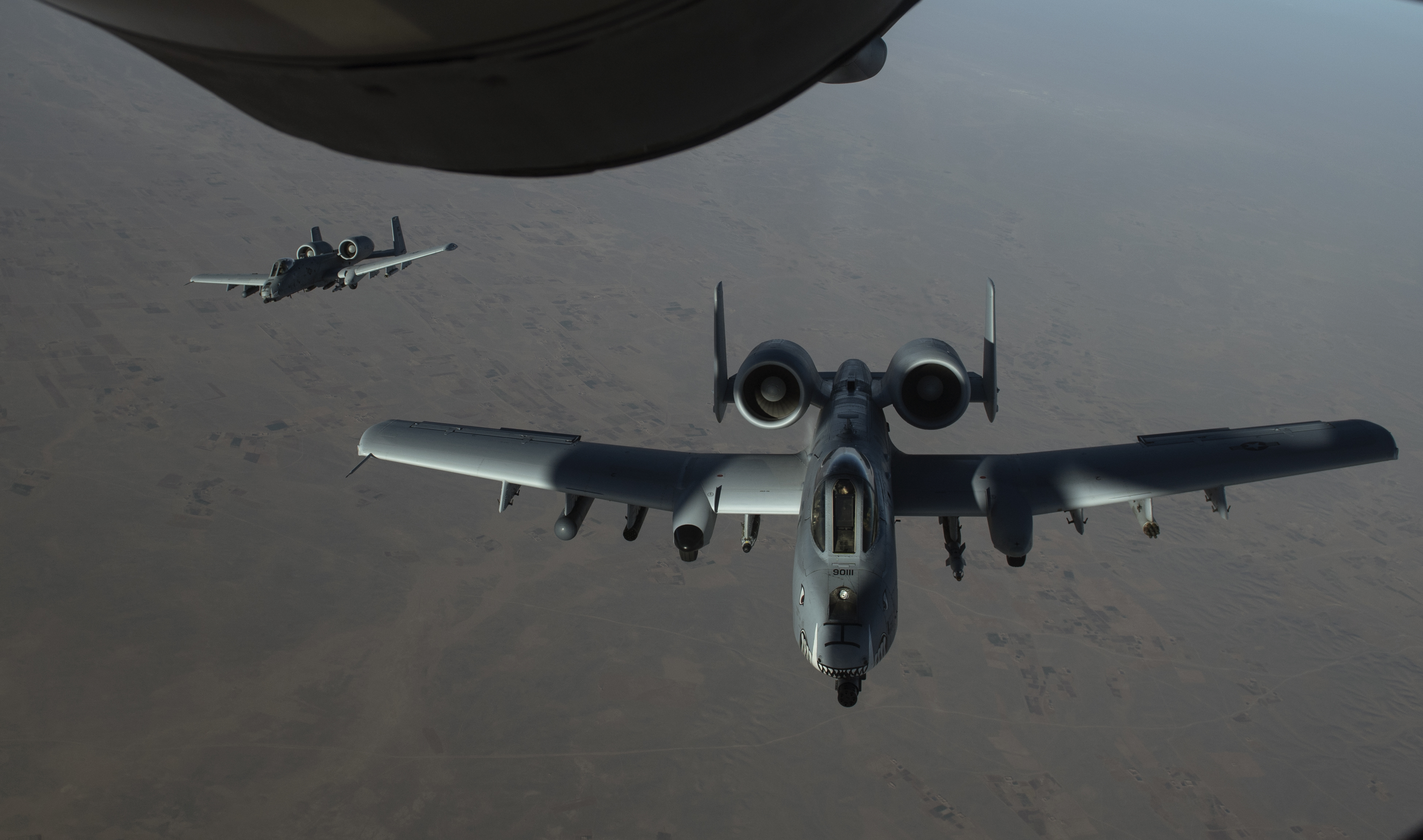
As part of its shift into Afghanistan, USAF has realigned aircraft like these A-10 Thunderbolt IIs, seen during a refueling mission over the country Feb. 7, 2018. USAF photo by TSgt. Paul Labbe.
The realignment of airpower away from Iraq and Syria and into Afghanistan has led to increased close air support and hundreds of precision airstrikes on Taliban targets “in the dead of winter” when the group is usually recouping and planning, the head of Air Forces Central Command said Tuesday
The war in Afghanistan is now US Central Command’s main focus after progress in fighting ISIS, and AFCENT Commander Lt. Gen. Jeffrey Harrigian told reporters Tuesday that this freedom has quickly translated to “tangible results” against the Taliban. MQ-9s flew directly to Afghanistan instead of being shipped over, and A-10s were rerouted in their deployment from Turkey to Kandahar. Last month, US aircraft conducted 321 strikes on Taliban targets, compared to just 54 in January of 2017.
“That’s the beauty of airpower, to be able to flexibly, and in a very agile fashion, switch from AOR to AOR,” Harrigian said. “So, as we work with both the OIR headquarters and the Resolute Support headquarters, we gather their requirements and then allocate the assets based on how we can best support them. … We’ve been able to ensure that when required, we’ve had the decisive air power required, whether that be for ISR, target development, overwatch, those types of activities.”
The main focus of the realignment so far has been on Taliban drug labs and infrastructure. This includes the recent B-52 strike on Taliban targets in Badakhshan province.
“Like [the war on ISIS] where we destroyed the oil production that ISIS depended on to fund their operations, our aim is to choke off the Taliban’s ability to fund its deadly attacks,” Harrigian said.
This operation, named Jagged Knife, kicked off with a November series of strikes on Taliban drug labs in Helmand province. The opening salvo included F-22s, which were called into action because of their ability to carry the Small Diameter Bomb. Harrigian said that at the time the F-22 with the SDB “made the most sense,” Raptors have not returned to Afghanistan since November, though they are ready to if needed.
In addition to the A-10s and MQ-9s, the Air Force also deployed HH-60G Pave Hawks in January to fly personnel recovery missions as US forces have increased. In October, the Air Force removed its Pave Hawks in Afghanistan and the 83rd Expeditionary Rescue Squadron became a joint Air Force-US Army operation, where USAF pararescuemen starting flying combat search and rescue missions on Army CH-47 Chinooks from Bagram Airfield.
The new HH-60s are assigned to the 33rd Expeditionary Rescue Squadron and are flying out of Kandahar Airfield in addition to the Chinook squadron at Bagram, Harrigian said.
“My responsibility as I look across Afghanistan is to make sure we’ve got the appropriate assets to cover down on folks that are flying out there,” he said.
